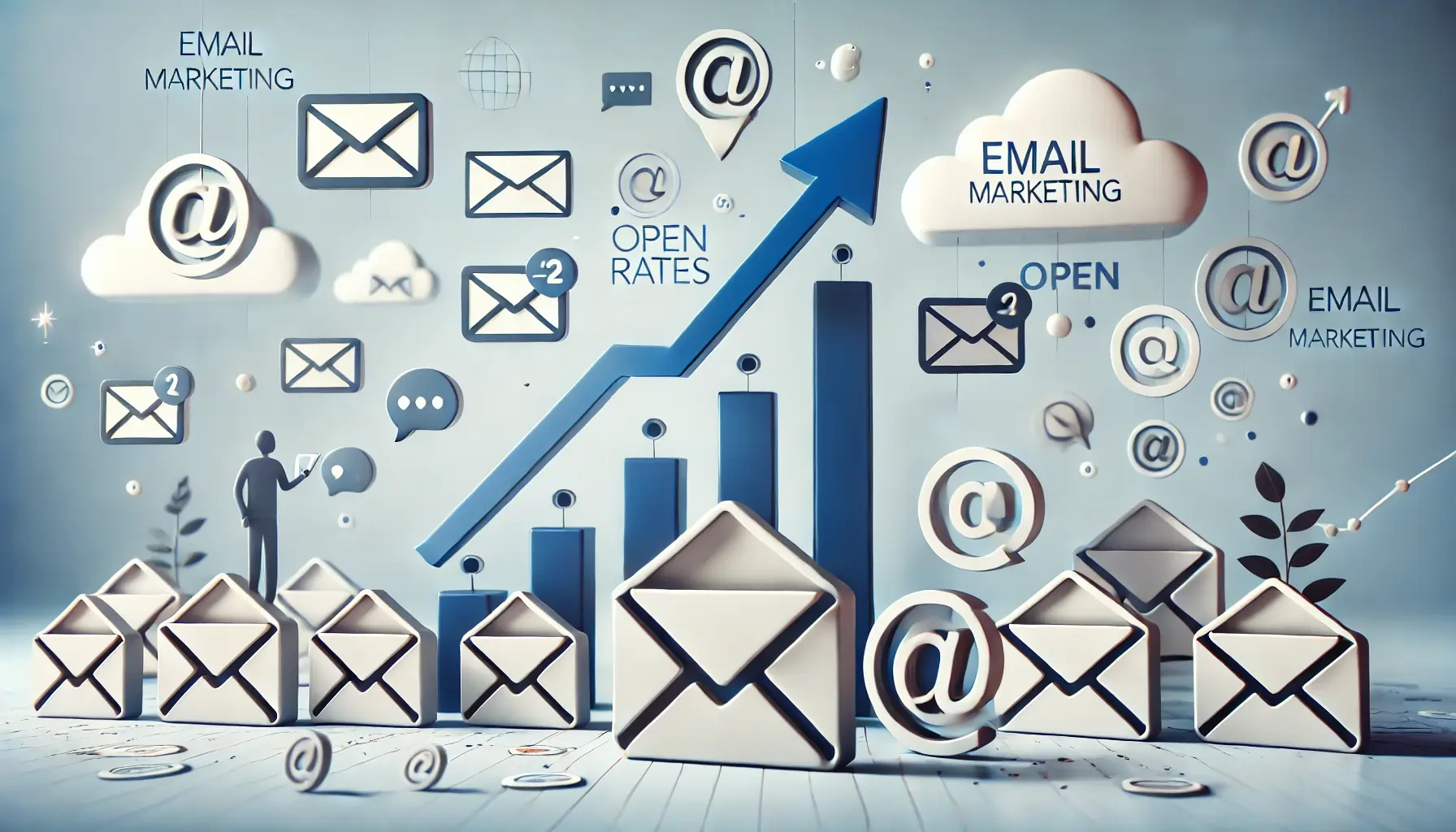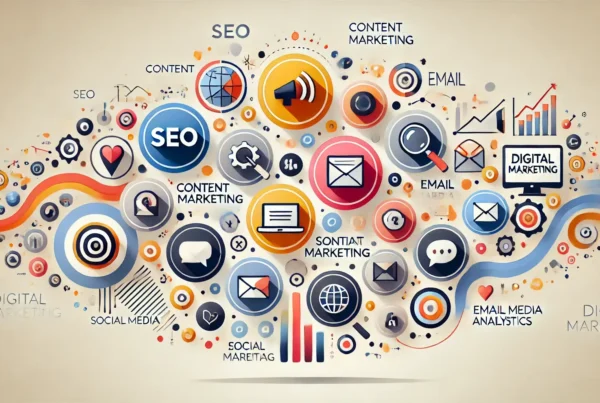Introduction
In today’s digital landscape, email remains one of the most effective marketing channels. While social media platforms come and go, email continues to be a powerful tool for businesses looking to connect with their audience, build relationships, and drive conversions. However, despite its effectiveness, one of the biggest challenges email marketers face is getting recipients to actually open their emails.
The success of an email marketing campaign hinges largely on the open rate—the percentage of recipients who open an email after receiving it. A low open rate can indicate that your emails are being overlooked, or worse, ending up in the spam folder. To maximize your email marketing efforts, it’s essential to employ strategies that encourage subscribers to open and engage with your content.
This article will explore the top email marketing techniques to increase open rates, boost engagement, and improve the overall effectiveness of your campaigns.
1. Craft Compelling Subject Lines
The subject line is the first thing your recipients see in their inbox, and it plays a pivotal role in determining whether they open your email. In fact, 47% of email recipients decide to open an email based solely on the subject line. To improve your open rates, you must craft subject lines that grab attention and pique curiosity.
Here are some tips for creating compelling subject lines:
- Keep it short and sweet: Aim for subject lines that are 40-50 characters long, ensuring they don’t get cut off, especially on mobile devices.
- Create urgency: Phrases like “Limited Time Offer” or “Act Now” encourage immediate action.
- Use personalization: Including the recipient’s name or location can make the subject line feel more tailored and relevant.
- Avoid clickbait: Don’t trick your audience into opening an email. Misleading subject lines can damage trust and increase unsubscribes.
Example: Instead of “Big Sale on Shoes,” try “Exclusive: 24-Hour Shoe Sale Just for You!”
2. Personalize Your Emails
Email marketing has evolved beyond generic, one-size-fits-all messaging. Personalization is key to making your emails feel relevant and engaging. By tailoring your emails based on the recipient’s preferences, behaviors, or past interactions, you can significantly increase the likelihood of them opening and engaging with your emails.
Some personalization techniques include:
- Using the recipient’s name in the subject line and email body.
- Segmenting your email list based on demographics, purchase history, or engagement level.
- Recommending products or services based on past behavior.
Example: Instead of sending a blanket promotion, segment your list and offer specific deals that align with the interests of different groups. If a customer previously purchased a tech gadget, send them a related accessory.
3. Optimize Send Times
Timing plays a crucial role in email marketing success. Even the best-crafted email can fail if it’s sent at the wrong time. Your subscribers’ behavior and habits will affect when they’re most likely to check and engage with their emails.
Research suggests that emails sent early in the morning or around lunch time tend to have higher open rates. However, the ideal send time will vary depending on your audience and industry.
To optimize send times:
- Test different days and times to find what works best for your audience. Commonly, emails sent on Tuesdays, Wednesdays, and Thursdays perform better.
- Consider time zones: If you have a global audience, segment your list by geographic region and schedule emails to land at optimal local times.
- Leverage automation tools to send emails at the right moments based on user actions, such as when they abandon a cart or sign up for a service.
4. Clean Your Email List Regularly
Maintaining a clean, high-quality email list is critical to improving open rates. Over time, some of your subscribers may become inactive, either because they no longer use that email address or because they’ve lost interest in your content. Sending emails to inactive subscribers can hurt your open rates and may even lead to your emails being marked as spam.
To keep your list clean:
- Remove inactive subscribers or send re-engagement emails to attempt to win them back.
- Use a double opt-in process to ensure only interested individuals are subscribing to your list.
- Regularly update and validate email addresses to avoid sending to invalid addresses, which can hurt your sender reputation.
Example: If a subscriber hasn’t engaged with your emails for six months, consider sending a “We Miss You” email, offering an incentive to re-engage or asking if they’d like to remain on the list.
5. Test and Optimize Subject Lines and Content
A/B testing (also known as split testing) is one of the most effective ways to improve your email marketing campaigns. By testing different versions of your subject lines, email content, and CTAs (calls-to-action), you can learn what resonates best with your audience and optimize future emails accordingly.
Here’s how to get started with A/B testing:
- Test one variable at a time: Whether it’s the subject line, content layout, or CTA, make sure you only test one change at a time to get clear insights.
- Use data to inform decisions: Analyze the results of your tests and use that information to refine your strategy. For example, if emails with personalized subject lines perform better, make personalization a regular practice.
- Test content elements: Try different email formats, such as plain text vs. HTML, or test different tones—formal vs. conversational.
6. Mobile Optimization is Key
With over half of all emails now being opened on mobile devices, optimizing your emails for mobile is no longer optional. If your emails don’t display correctly on smartphones and tablets, recipients are likely to delete them without even reading.
To ensure your emails are mobile-friendly:
- Use a responsive design that adjusts to different screen sizes.
- Keep the subject line and preheader text short, as mobile screens show fewer characters.
- Simplify your content: Use a clean layout with concise copy, clear headings, and prominent CTAs that are easy to tap on a touchscreen.
- Optimize images so they load quickly and display correctly on all devices.
7. Create Engaging Preheader Text
Preheader text is the short summary that appears next to or below the subject line in most email inboxes. It provides recipients with a sneak peek of the email content and can influence their decision to open the email.
Make your preheader text count by:
- Avoiding repetition of the subject line.
- Using it as a hook to build curiosity and encourage the recipient to learn more.
- Including a clear value proposition or offer that entices the recipient to open the email.
Example: If your subject line is “Big Summer Sale,” the preheader could be, “Get 50% off your favorite items, plus free shipping!”
8. Focus on Delivering Value
At the end of the day, your subscribers are more likely to open and engage with your emails if they find them valuable. Sending promotional emails all the time can lead to email fatigue and cause subscribers to tune out. Instead, focus on providing a balance between promotional content and valuable information that aligns with your audience’s interests.
Types of value-driven content you can offer:
- Exclusive content or sneak peeks of new products.
- Educational resources like how-to guides, tips, or case studies.
- Special discounts or loyalty rewards for your email subscribers.
- Personalized recommendations based on their past purchases or browsing behavior.
9. Build Trust with a Recognizable “From” Name
The “From” name in an email is just as important as the subject line. Recipients are more likely to open emails from senders they recognize and trust. Using a clear and recognizable name, whether it’s your brand or a key person in your organization, helps establish trust and encourages recipients to open your emails.
Avoid sending emails from a generic address like “no-reply@company.com.” Instead, consider using a specific team member’s name or a branded email address that represents your company’s identity.
10. Leverage the Power of Automation
Email automation allows you to send timely, relevant, and personalized messages to your subscribers without manually crafting each email. With automation, you can set up email flows based on specific triggers, such as welcome emails for new subscribers, abandoned cart reminders, or birthday offers.
By delivering emails that are timely and contextually relevant, automation increases the chances of recipients opening your emails.
Conclusion
Improving your email open rates is an ongoing process that requires thoughtful strategies, testing, and adjustments. By focusing on crafting compelling subject lines, personalizing your content, optimizing send times, and maintaining a clean email list, you can significantly increase the likelihood of your emails being opened and engaged with.
Remember, the key to successful email marketing is delivering value. When your subscribers feel that your emails offer something worthwhile, whether it’s helpful information, exclusive discounts, or personalized recommendations, they’re much more likely to open your emails and take action.
By incorporating these proven techniques, you’ll be well on your way to boosting your open rates, improving engagement, and achieving greater success with your email marketing campaigns.
Learn About Content Marketing




